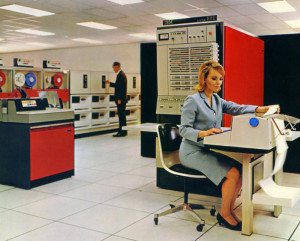 The IBM System/360 mainframe computer was the first line of computers designed to cover a complete range of applications, both scientific and commercial. The first in the family, the Model 30 was the precursor to modern day computing. It could perform up to 34,500 instructions per second and had a memory from 8 to 64KB.
The IBM System/360 mainframe computer was the first line of computers designed to cover a complete range of applications, both scientific and commercial. The first in the family, the Model 30 was the precursor to modern day computing. It could perform up to 34,500 instructions per second and had a memory from 8 to 64KB.
This was the largest investment by IBM into computing, and cost $5 billion to develop – in today’s terms, about $38 billion. The system was built on a ‘solid logic’ semiconductor and allowed different applications to communicate.
Though it went against industry practices at the time, IBM created an entire family of computers under the System/360 from low to high performance. This allowed consumers to ‘dip their toe in’ by purchasing a smaller, less powerful model, and upgrade in the future when their needs and comfort levels increased. The System/360 line of computers was extremely successful, largely due to their scalability.
The system’s flexibility greatly lowered barriers to entry for individuals and companies alike. It is thought to be one of the most successful computers of all time, and certainly had an effect on computer design for decades to come.





